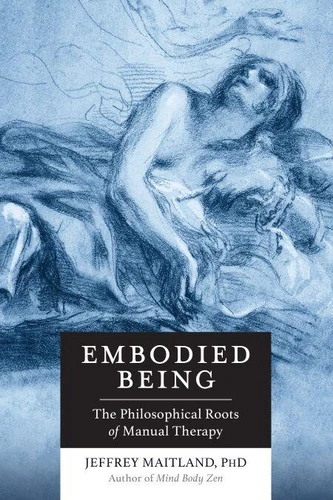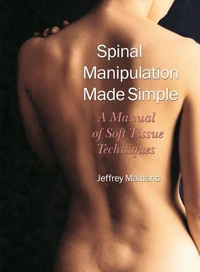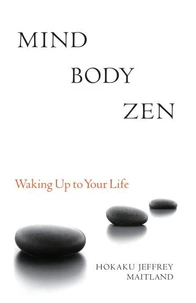Embodied Being. The Philosophical Roots of Manual Therapy
Par :Formats :
Disponible dans votre compte client Decitre ou Furet du Nord dès validation de votre commande. Le format ePub protégé est :
- Compatible avec une lecture sur My Vivlio (smartphone, tablette, ordinateur)
- Compatible avec une lecture sur liseuses Vivlio
- Pour les liseuses autres que Vivlio, vous devez utiliser le logiciel Adobe Digital Edition. Non compatible avec la lecture sur les liseuses Kindle, Remarkable et Sony
- Non compatible avec un achat hors France métropolitaine
 , qui est-ce ?
, qui est-ce ?Notre partenaire de plateforme de lecture numérique où vous retrouverez l'ensemble de vos ebooks gratuitement
Pour en savoir plus sur nos ebooks, consultez notre aide en ligne ici
- Nombre de pages176
- FormatePub
- ISBN978-1-62317-027-1
- EAN9781623170271
- Date de parution09/02/2016
- Protection num.Adobe DRM
- Taille426 Ko
- Infos supplémentairesepub
- ÉditeurNorth Atlantic Books
Résumé
Embodied Being is unique among books on manual therapy, offering an "infrastructure for intuition, " a philosophical approach to what is essentially a practical process of diagnosis and treatment with one's hands. Grounded in the author's decades of practice as a Rolfer and Zen meditator, the book offers a first-of-its-kind three-step method for training practitioners how to see holistically, given the enormously important role perception plays in assessing clients.
By exposing many of the unconscious philosophical assumptions that occlude our understanding the depths of manual therapy, Embodied Being promises to illuminate the full scope of body-mind healing, from the point of view of both the practitioner and the person receiving the work. Embodied Being states the principles of intervention and shows practitioners how to use them to answer three fundamental questions common to all forms of therapy: What do I do first? What do I do next? and When am I finished? Perplexed that most practitioners are unable to answer these questions and simply rely on their intuition, Maitland sets out to define what makes a truly life-altering bodywork session, drawing on his understanding of Goethe, Merleau-Ponty, and other great thinkers.
Maitland proposes that the holistic approach in bodywork is capable of creating new possibilities for the future by erasing the patterns that bind us to a dysfunctional past. Such sessions can so profoundly reshape the body that there is no longer any room for emotional torment--thus manual therapy can free bodies of physical pain, releasing the innate joy within the core of all human beings. Ultimately, giving and receiving manual therapy teaches both practitioners and clients how to move with grace, open their hearts, and touch the numinous.
By exposing many of the unconscious philosophical assumptions that occlude our understanding the depths of manual therapy, Embodied Being promises to illuminate the full scope of body-mind healing, from the point of view of both the practitioner and the person receiving the work. Embodied Being states the principles of intervention and shows practitioners how to use them to answer three fundamental questions common to all forms of therapy: What do I do first? What do I do next? and When am I finished? Perplexed that most practitioners are unable to answer these questions and simply rely on their intuition, Maitland sets out to define what makes a truly life-altering bodywork session, drawing on his understanding of Goethe, Merleau-Ponty, and other great thinkers.
Maitland proposes that the holistic approach in bodywork is capable of creating new possibilities for the future by erasing the patterns that bind us to a dysfunctional past. Such sessions can so profoundly reshape the body that there is no longer any room for emotional torment--thus manual therapy can free bodies of physical pain, releasing the innate joy within the core of all human beings. Ultimately, giving and receiving manual therapy teaches both practitioners and clients how to move with grace, open their hearts, and touch the numinous.
Embodied Being is unique among books on manual therapy, offering an "infrastructure for intuition, " a philosophical approach to what is essentially a practical process of diagnosis and treatment with one's hands. Grounded in the author's decades of practice as a Rolfer and Zen meditator, the book offers a first-of-its-kind three-step method for training practitioners how to see holistically, given the enormously important role perception plays in assessing clients.
By exposing many of the unconscious philosophical assumptions that occlude our understanding the depths of manual therapy, Embodied Being promises to illuminate the full scope of body-mind healing, from the point of view of both the practitioner and the person receiving the work. Embodied Being states the principles of intervention and shows practitioners how to use them to answer three fundamental questions common to all forms of therapy: What do I do first? What do I do next? and When am I finished? Perplexed that most practitioners are unable to answer these questions and simply rely on their intuition, Maitland sets out to define what makes a truly life-altering bodywork session, drawing on his understanding of Goethe, Merleau-Ponty, and other great thinkers.
Maitland proposes that the holistic approach in bodywork is capable of creating new possibilities for the future by erasing the patterns that bind us to a dysfunctional past. Such sessions can so profoundly reshape the body that there is no longer any room for emotional torment--thus manual therapy can free bodies of physical pain, releasing the innate joy within the core of all human beings. Ultimately, giving and receiving manual therapy teaches both practitioners and clients how to move with grace, open their hearts, and touch the numinous.
By exposing many of the unconscious philosophical assumptions that occlude our understanding the depths of manual therapy, Embodied Being promises to illuminate the full scope of body-mind healing, from the point of view of both the practitioner and the person receiving the work. Embodied Being states the principles of intervention and shows practitioners how to use them to answer three fundamental questions common to all forms of therapy: What do I do first? What do I do next? and When am I finished? Perplexed that most practitioners are unable to answer these questions and simply rely on their intuition, Maitland sets out to define what makes a truly life-altering bodywork session, drawing on his understanding of Goethe, Merleau-Ponty, and other great thinkers.
Maitland proposes that the holistic approach in bodywork is capable of creating new possibilities for the future by erasing the patterns that bind us to a dysfunctional past. Such sessions can so profoundly reshape the body that there is no longer any room for emotional torment--thus manual therapy can free bodies of physical pain, releasing the innate joy within the core of all human beings. Ultimately, giving and receiving manual therapy teaches both practitioners and clients how to move with grace, open their hearts, and touch the numinous.





